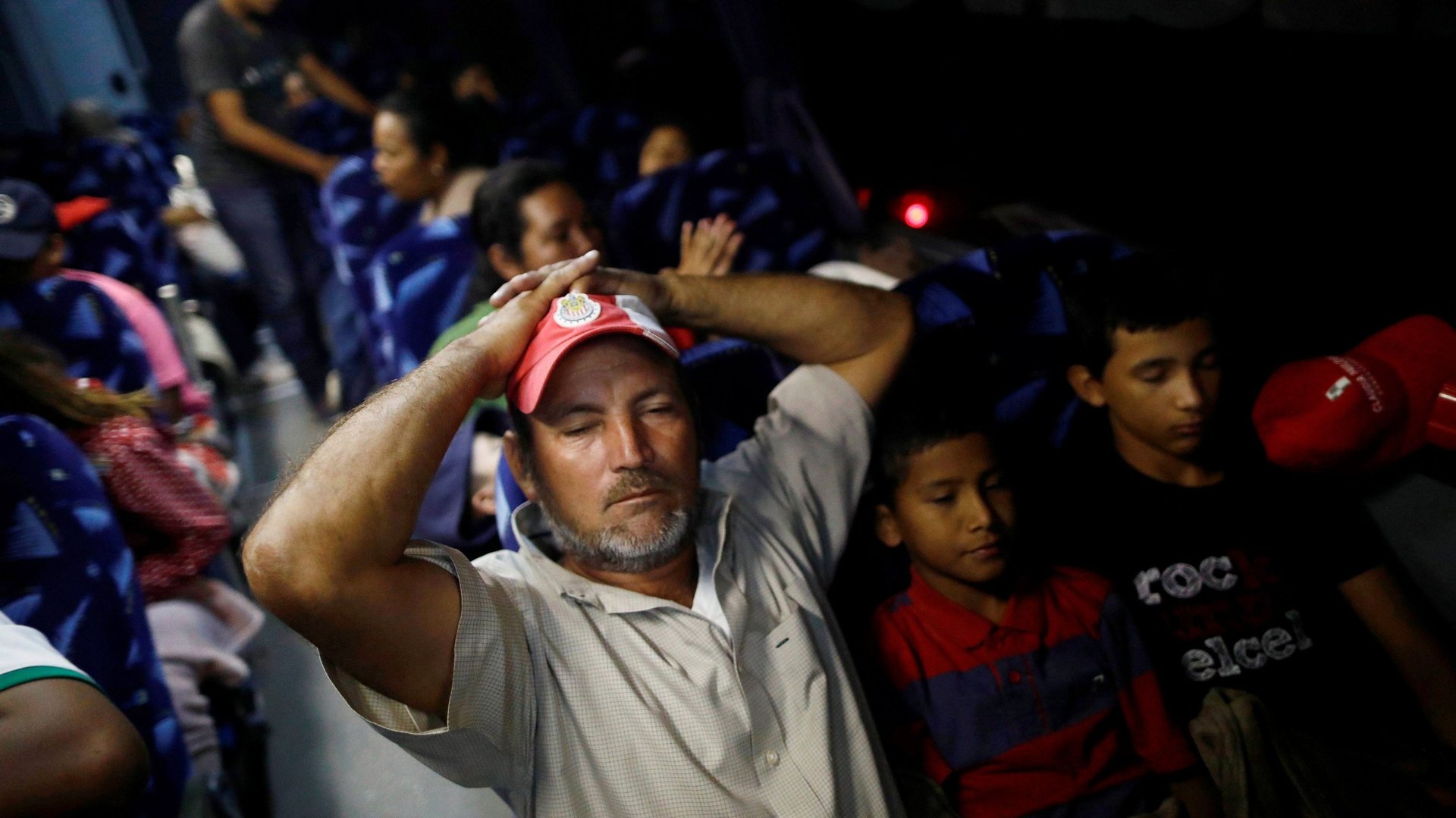The truth about the immigrant caravan: What it is and why it’s coming to the US
The Trump administration is bracing for the arrival to the US of a caravan of immigrants that has been traveling through Mexico over the past month.


The Trump administration is bracing for the arrival to the US of a caravan of immigrants that has been traveling through Mexico over the past month.
The group, mostly from Central America, drew presidential ire after it was featured in a Fox News report at the beginning of April. In a series of tweets, Donald Trump warned about the growing danger posed by “caravans” and renewed calls for his proposed border “WALL.”
Attorney general Jeff Sessions, meanwhile, has said the US would not tolerate “the lawlessness of these types of efforts.” Earlier this week, Homeland Security secretary Kristjen Nielsen, added that her agency “is doing everything within our authorities to secure our borders and enforce our laws.”
Lost in the official statements, however, are some key details about the nature of the caravan, which was organized by an immigrant advocacy group called Pueblo sin Fronteras, or People without Borders. Here are a few:
The caravan’s true size
This year’s caravan initially attracted an unusually large number of immigrants—around 1,000 at one point—because the situation in Central America is particularly tense. Honduras, for example, was beset by violent protests after the election late last year of Juan Orlando Hernandez—who was backed by the Trump administration despite reports of voting irregularities.
Some of those immigrants applied for asylum in Mexico and never intended to make it all the way to the US; others were deported by the Mexican government. At this point, organizers say the caravan has shrunk to roughly 300 people.
Who’s in the caravan
Trump points to the caravan as evidence that the US needs to build a wall to protect the border. What it really shows is that the US needs to update its immigration system.
The nature of immigration to the US has changed. Immigrants fleeing war-like conditions in Central American have been replacing the economic migrants from Mexico that used to make the bulk of border crossers. Unlike those economic migrants, who could be quickly turned back, the new arrivals are claiming asylum and the US is obligated to hear them out.
That task requires a different type of immigration system: one that’s heavy on asylum officers and lighter on Border Patrol agents. A wall, for example, wouldn’t prevent the members of the caravan from showing up at a port of entry to request asylum—as some of them plan to do on Sunday in San Diego.
Right to asylum
Sessions’s claims of lawlessness aside, the caravan members have a right to request asylum. The US has committed to protect persecuted people by signing the 1967 “Protocol Relating to the Status of Refugees,” and through its own immigration laws. Under those laws, asylum seekers are not required to file for asylum in the first “safe country” they reach, as Nielsen suggested in her statement earlier this week. Even if they were, members of the caravan could argue without much difficulty that Mexico is unsafe.
So, if the Trump administration is to follow the law, it will have to screen the caravan members to determine whether they have legitimate claims. Nielsen understands that. Though she didn’t mention the word “asylum” in her statement, she said her department was preparing to “ensure the necessary resources are in place to promptly adjudicate all cases and claims.” She also issued a warning: anyone who lies to get into the US will be prosecuted.
A symbolic protest march
The biggest threat posed by the caravan is symbolic. It was devised as a public protest to raise awareness about the plight of immigrant, not as a way to storm the US.
Immigrant advocates and activists have been organizing caravans for a few years. They call them “via crucis” or “stages of the cross” to draw parallels between Jesus and migrants—a gambit that denotes the caravans’ PR nature.
Even Trump seems to understand this. At one point, he thanked the Mexican government for breaking up the caravan and preventing it from causing “a giant scene at our Border” in a tweet. Ironically, it’s been Trump’s outrage that has made this year’s via crucis the most successful yet in publicizing the immigrants’ cause.